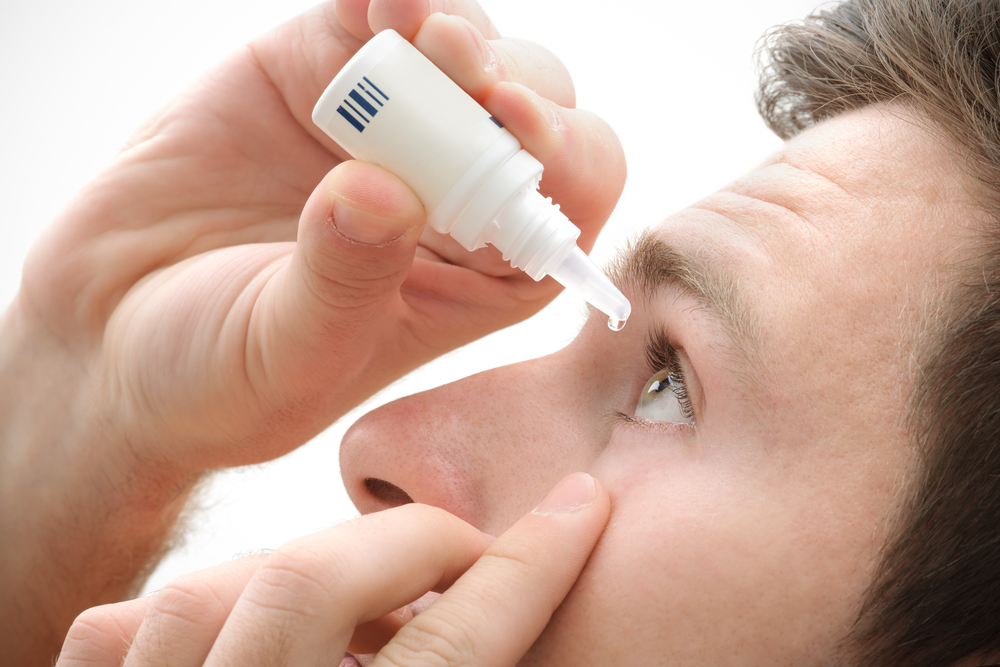- Use of digital devices increases the chances of suffering from dry eye symptoms.
Dominican Republic, October 2017 – You are in front of the computer monitor. At the end of the day, he has burning and irritation, and possibly his vision is somewhat blurred. Like you, millions of people experience dry eye symptoms every day.
‘The dry eye’ is a medical term to describe the lack of moisture in the eye. It is the result of inadequate lubrication and occurs when the tear glands stop producing enough tears or produce tears of poor quality. This causes some symptoms, which may include:
- Burning, burning or scratching sensation in the eyes.
- Thick mucus in or around the eyes.
- Light sensitivity.
- Redness of the eyes
- Feeling of having something in your eyes (sand feeling).
- Difficulty wearing contact lenses.
- Trouble driving at night
- Excessive tearing.
- Blurred vision or tired eyes.
When adequate treatment is not received, this condition can alter and have a negative effect on the quality of life of patients. Tears maintain the health of the front surface of the eyes and help provide clear vision.
This condition can develop for various reasons and risk factors, including:
- Age: As a natural part of aging, most people 65 years of age and older experience dry eye symptoms.
- Gender: Women are more likely to develop dry eye due to hormonal changes, the use of oral contraceptives and menopause.
- Environmental conditions: Exposure to smoke, wind and dry climates, or not to blink regularly (for example, when working with a computer for prolonged periods).
- Poor quality of tears: problems within the three layers of the tear film (oily, watery, mucous).
- Decreased tear production: the inability to produce enough tears.
- Medications: Certain medications can reduce the number of tears produced: antihistamines, decongestants, blood pressure medications, and antidepressants.
- Medical conditions: rheumatoid arthritis, diabetes, and thyroid problems can cause an increased risk of dry eye.
Additionally, after some procedure such as LASIK (refractive surgery for the correction of farsightedness myopia and/or astigmatism), more than 95% of patients experience dry eye symptoms. In these cases, it is also recommended to accompany the preoperative treatment with artificial tears.
“Dry eye can become a chronic disease, but your ophthalmologist can prescribe a simple treatment to improve the volume and/or quality of tears, treat inflammation of the eye and in this way, maintain your healthy eyesight and prevent further problems of vision ”, reveals the director of the Ophthalmological Therapeutic Area for Novartis in Central America and the Caribbean, Dr. Ainhoa Bacaicoa.
Most patients, he adds, use eye drops that relieve some symptoms, but do not treat them, so they will continue to have problems. Hence his call to visit his trusted ophthalmologist.
Dry eye can be diagnosed through an evaluation, which will include the patient’s history to determine environmental factors or medication that may influence the diagnosis; an external evaluation of the eye, which consists of the dynamics of blinking and the structure of the eyelashes, as well as the evaluation of tears. Contrasts could be used to assess the quality of the tear. This process will determine the best treatment for you.
Some tips to improve dry eye symptoms:
- Visit your ophthalmologist.
- Blink regularly when reading or when in front of the computer for extended periods.
- Increase the humidity of the house and work air.
- Wear dark glasses outdoors.
Consider adding supplements with omega 3 to your diet to help promote the generation of healthy tears.
About Novartis
Novartis provides innovative health solutions that address the evolving needs of patients and societies. Based in Basel, Switzerland, Novartis offers a diversified portfolio to meet these needs: innovative medicines better,
Vision care and generic pharmaceutical products that save costs. Novartis is the only global company with leadership positions in these areas. In 2016, the Group achieved net sales of USD 48.5 billion, while R&D throughout the entire group amounted to approximately USD 9.0 billion.
The Novartis Group companies employ approximately 118,000 full-time associates. Novartis products are available in more than 155 countries around the world. For more information, please visit www.novartis.com.





